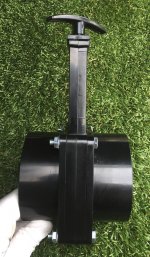'Lil Guy'
Well-known member
Only had my BH out once to a HL rally. Everybody had the gate valves on their rigs. While talking with Mike F. about them, he said they are a must and advised I would get little surprise the 1st time I opened the cap to hook up. Needless to say I ordered one and had it for months waiting to get my rig out of storage. Put on some rubber gloves, cap tight so I got on my knees to use both hands. Wrong., A huge surprise. I got hit with about 3 gallons of nasty grey water (I hope). I was naked by the time I got to the bathroom and in shower. DW finished the install. I've never seen that buildup before on my other 2 rigs. Thanks Mike, I would hate to see one of your big surprises.lol

